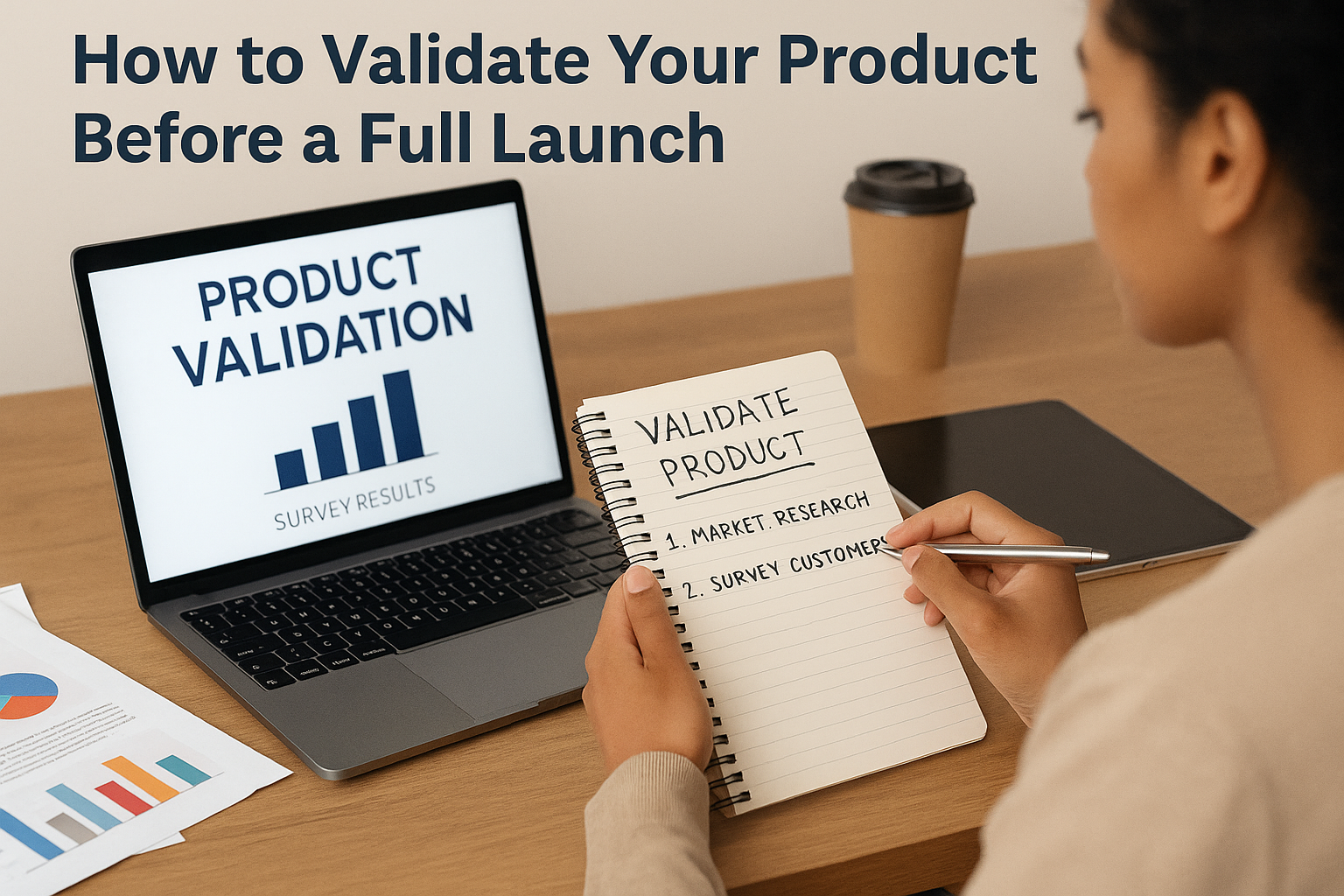Imagine spending months developing a product—only to discover that no one wants to buy it. It’s a painful and common mistake. That’s why smart entrepreneurs don’t launch blindly. Instead, they validate their product first.
Product validation is the process of testing whether your idea has real demand before you fully build or invest in it. This saves time, money, and disappointment—while helping you create something people actually want.
Neste artigo, você vai aprender como validar sua ideia de produto com estratégias práticas e de baixo custo.
Why Product Validation Is Essential
Skipping validation often leads to:
- Wasted time and money
- Building something no one needs
- Low or no sales
- Frustration and early burnout
But when you validate first, you can:
- Confirm demand
- Improve your product based on feedback
- Build an audience early
- Create with confidence
1. Define the Problem You’re Solving
Start with clarity:
- What problem does your product solve?
- Who is affected by this problem?
- How urgent is the pain point?
If your idea doesn’t solve a real problem or satisfy a strong desire, it won’t sell—no matter how beautiful or creative it is.
Tip: Problems that cost people time, money, or stress often have higher demand.
2. Create a Simple Landing Page
You don’t need a full website to validate.
Build a one-page site that includes:
- A clear headline about your offer
- A short description of the problem and your solution
- Key benefits and features
- A call to action (email signup, waitlist, pre-order)
Use tools like Carrd, Wix, or Notion to build fast and cheap. Then share the link to start collecting interest.
3. Offer a Pre-Sale or Waitlist
Nothing validates a product like a real transaction. If people pay (or are willing to), you’re on the right track.
Option 1: Pre-Sale
Sell the product before it’s fully ready with an early-bird price or bonus. Make it clear when they’ll receive it.
Option 2: Waitlist
If you’re not ready to accept payments, create urgency with a waitlist or VIP access form. Use email signups as a sign of demand.
Set a goal like: “If I get 100 people on the waitlist, I’ll move forward.”
4. Talk Directly to Potential Customers
Validation isn’t just about data—it’s about understanding people.
Set up short interviews or informal chats to ask:
- What’s your biggest challenge with [topic]?
- Have you tried to solve it before?
- Would you pay for [solution] if it existed?
- What would make it irresistible?
Record insights. Look for patterns. Real conversations give you golden feedback you’ll never get from analytics alone.
5. Test With a Minimum Viable Product (MVP)
Instead of building the full product, create a lightweight version with just the core function.
Examples:
- A Google Doc guide instead of a full eBook
- A Zoom workshop instead of a recorded course
- A manual service before automating it
Your MVP should be usable and useful—but not fancy. It’s for learning, not impressing.
6. Use Social Media to Gauge Interest
Post about your idea on your chosen platform and watch for engagement.
Ideas:
- Polls or surveys
- Behind-the-scenes of the build
- Concept mockups
- “Would you buy this?” posts
- A free resource that leads to your product
If people engage, ask questions, or DM you—that’s a strong sign of interest.
7. Look for Purchase Intent (Not Just Likes)
Validation isn’t just about clicks or comments—it’s about action.
Track:
- Email signups
- Click-through rates
- Replies or DMs
- Pre-orders or sales
- Requests for more information
People show serious intent with their time, data, or money.
8. Study Similar Products
Look at your competitors:
- Are people buying similar products?
- What do the reviews say (good and bad)?
- How do they describe the problem and benefits?
You don’t need to reinvent the wheel. Just create a better, more focused version—or serve a different segment of the market.
9. Be Honest With the Data
It’s easy to fall in love with your idea—but don’t ignore what the data says.
If no one signs up, pays, or even responds:
- It might not be the right time or audience
- Your offer may not be clear
- The problem might not feel urgent enough
- Your product may not be the right solution
Use this info to refine, pivot, or explore a better idea—not to quit entirely.
Final Thoughts: Test Small, Learn Fast
Your first idea won’t be perfect—and that’s okay. The goal of validation is to learn early so you can adjust, improve, and succeed faster.
Before you invest in logos, websites, or features—test the core offer with real people.
Build something people want. Start small. Validate first.
